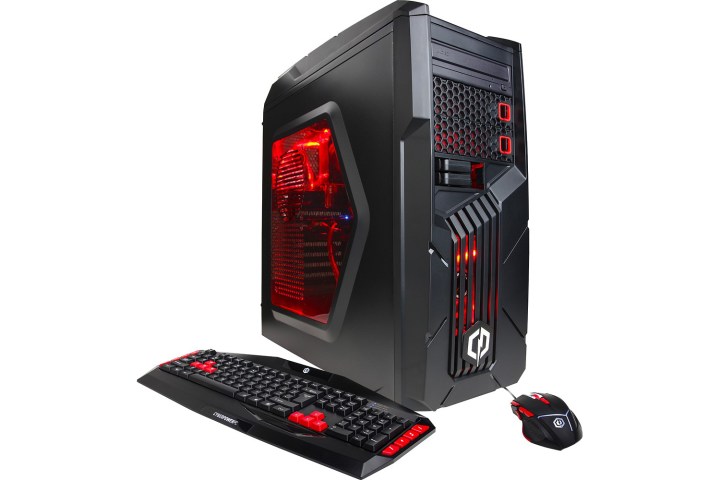
But here’s the catch: Customers can’t purchase this PC by itself. Instead, the company is only serving up a $1,100 bundle through Best Buy. For that price, customers get the VR-ready PC, a gaming keyboard, a gaming mouse, the Oculus Rift headset, one sensor, the Oculus remote, an Xbox One controller, cables, and the VR game Lucky’s Tale. The new Oculus Touch controllers and second sensor are not included.
Neither CyberPowerPC or Best Buy provide a detailed list of hardware, but merely a short list:
| Processor: | AMD FX-4350 (quad-core) |
| Memory: | 8GB DDR3 |
| Graphics: | AMD Radeon RX 470 (4GB GDDR5) |
| Storage: | 1TB 7,200RPM hard drive DVD burner |
| Ports: | 1x Gigabit Ethernet 1x HDMI 3x USB 3.0 7x USB 2.0 |
That’s all we have for now. In the meantime, for those not familiar with the CPU and graphics chip used in CyberPowerPC’s new VR-ready PC, here are a few additional details:
| Processor | |
| Package: | AM3+ |
| Unlocked: | Yes |
| Total L2 cache: | 4MB |
| Number of cores: | 4 |
| Number of threads: | 4 |
| Base clock speed: | 4.2GHz |
| Maximum clock speed: | 4.3MHz |
| Maximum power draw (TDP): | 125 watts |
| Price: | $80 |
| RX 470 Graphics | |
| Steam processors: | 2,048 |
| Compute Units: | 32 |
| Base clock speed: | 926MHz |
| Boost clock speed: | 1,206MHz |
| Memory clock speed: | 1,650MHz |
| Memory bandwidth: | 211GB per second |
| Memory interface: | 256-bit |
| Memory amount/type: | 4GB GDDR5 |
| Maximum power draw: | 120 watts |
| Base price: | $170 |
The new VR-ready desktop is based on CyberPowerPC’s X-Nova chassis that’s used with its “Essential” line of PCs. Currently, the company provides three customizable Essential configurations: the 1000 model with a starting price of $1,035, the 2000 model with a starting price of $1,125, and the 3000 model with a starting price of $1,339. All three are based on Intel processors, so the similarities between the new VR-ready PC and the Essential-branded desktops stops there.
Compared to CyberPowerPC’s heaping of Intel-based gaming desktops, the company only offers nine systems based on the AMD FX processor, none of which sport the FX-4350 CPU by default. The list includes the Gamer Dragon, the Mega Special I, the Pro Gamer FTW Ultra 3000, the Gamer Scorpius 9000, the Gamer Ultra 7500, and a few others.
“The system offered in the bundle has been extensively tested by both CyberPowerPC and Oculus to ensure that it is perfectly compatible with the Oculus Rift headset,” the company said on Monday. “This PC is among one of the first from CyberPowerPC that has been certified as Oculus Ready.”
The thing to keep in mind is that AMD’s FX-4350 desktop processor was released in April 2013. It’s based on AMD’s “Piledriver” CPU design and only supports DDR3 system memory clocked at 1,866MHz. It’s not the freshest stallion out of the AMD stable, but it’s backed by one of AMD’s latest graphics cards based on its “Polaris” design. The RX 470 arrived in the summer of 2016 as an affordable means in upgrading mainstream PCs with VR capabilities.
Also keep in mind that, if purchasing the CyberPowerPC bundle on Best Buy, customers will need to buy the $200 Oculus Touch controller kit for the complete full-motion experience. A third stand-alone sensor can be purchased for better full-room coverage by heading here.


